19h 24min UT on March 11, 2022. A small asteroidal trail is detected by Krisztián Sárneczky, from Piszkéstető Observatory (Hungaria). Less than 2 hours later, 2022 EB5 impacted the Earth atmosphere South-West of Jan Mayen island. 5th time that a small asteroid is discovered before it enters the Earth atmosphere!
2022 EB5: 5th predicted Earth impactor
2008 TC3, 2014 AA, 2018 LA and 2019 MO. These asteroids have in common the fact that they are Earth impactors discovered before they actually entered the Earth atmopshere. Since March 11, 2022, another one completed the list: 2022 EB5! This small Apollo asteroid, estimated to be below 2-meter diameter, was discovered less than two hours before by Krisztián Sárneczky, from Piszkéstető Observatory (Hungaria).
| Asteroid | 2008 TC3 | 2014 AA | 2018 LA | 2019 MO | 2022 EB5 |
|---|---|---|---|---|---|
| Category | Apollo | Apollo | Apollo | Apollo/Alinda | Apollo |
| Dimensions | ~ 4 m | ~ 3 m | ~ 3 m | ~ 5 m | ~ 2 m |
| Mass | ~ 80 tons | ~ 40 tons | ~ 40 tons | ~ 200 tons | |
| Abs. Mag. | 30.4 | 30.9 | 30.6 | 29.3 | 32.2 |
| Entry speed | 12.8 km/s | 11.7 km/s | 17 km/s | 16.1 km/s | 18 km/s |
| Energy | 0.9-2.1 kt TNT | 0.5-1 kt TNT | ~ 0.4 kt TNT | 6 kt TNT | ~ 2 kt TNT |
| Discovery date | Oct. 6, 2008, 06h 39min UT | Jan. 1, 2014, 06h 18min UT | Jun. 2, 2018, 08h 22min UT | Jun. 22, 2019, 07h 254min TU | Mar. 11, 2022, 19h 24min UT |
| Impact date | Oct. 7, 2008, 02h 46min UT | Jan. 2, 2014, ~03h 06min UT | Jun. 2, 2018, 16h 44min UT | Jun. 22, 2019, 21h 25min TU | Mar. 11, 2022, 21h 22min UT |
| Impact location | Nubian desert, Sudan | Atlantic Ocean, 3 000 km from Caracas, Venezuela |
Bostwana-South Africa border | South coast of Puerto Rico, Carribean Sea |
South-West of Jan Mayen island |
| Meteorites recovery | Almahata Sitta: 600 ureilites fragments (10.5 kg) |
– | Motopi Pan: 24 HED fragments, originating Vesta |
– | – |
Alert was thus sent to observers rougly one hour after the discovery, encouraging European observers to monitor the small object before it would enter our planet atmopshere. Additionnal data (Figure 1) allowed a more accurate impact position (South of Jan Mayen island) and time predictions (around 21h 23min UT) (Figure 2).
Impact! When 2022 EB5 struck the Earth north of Iceland this morning, it became the 5th asteroid to be discovered prior to impacting Earth. pic.twitter.com/kYsQ40uuFq
— Tony Dunn (@tony873004) March 12, 2022
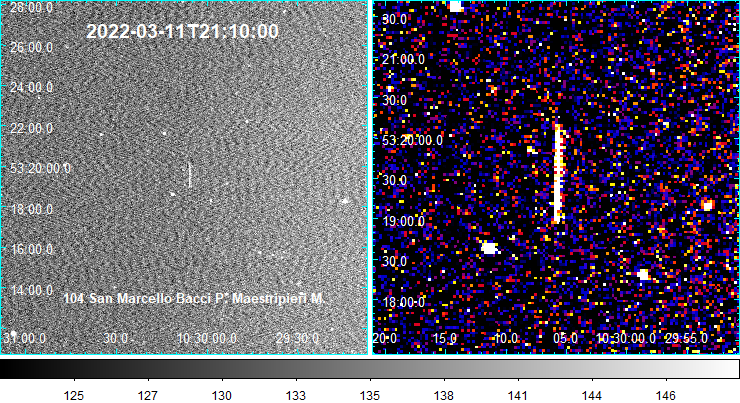
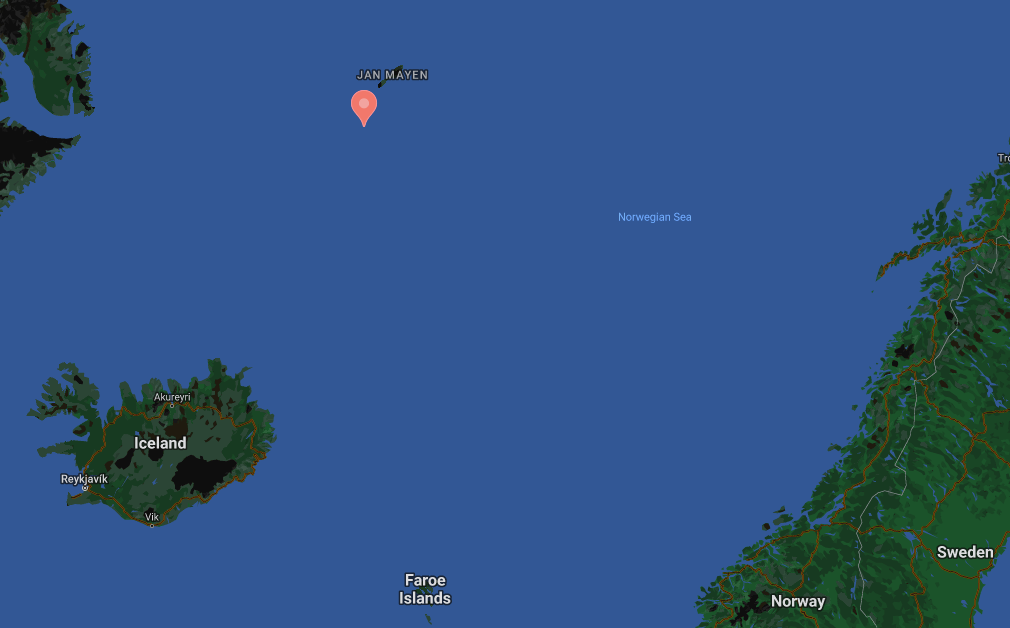
Asteroid entry recorded by visual witnesses and infrasound stations
Near the predicted impact time, some observers from Northern Iceland (close to Akureyri) reported having observed a bright flash above the horizon.
I did not, but facebook friends north east of Husavik were asking about a blue-ish explotion/flash in the sky that lasted for about two seconds. The time of the questions fits. pic.twitter.com/6c2n7V4uaK
— Sindri Geir 🇺🇦🇵🇸 (@sindrigeir) March 12, 2022
Minutes later, around 22h 15min Ut and 23h 40min UT, infrasonic signals originating from this asteroid atmospheric respectively entry arrived at I18DK (Greenland, Figure 3) and I37NO (Norway, Figure 4 & 5) infrasound stations.
Infrasound detection from 2022 EB5 impact off the coast of Iceland at I37NO between 2223-2227 UTC. Below is I18DK infrasound data in Greenland. Arrival near 2340 UTC. From this data yield is approximately 2-3 kT TNT. At 15 km/s, this is roughly 3-4 m diameter. @WesternU #2002EB5 pic.twitter.com/FYI9jn7zCb
— Peter Brown (@pgbrown) March 12, 2022
According to Peter Brown (University of Western Ontario), those signals allow to estimate the total energy of the event around 2 kt TNT. Which helps in calculating the 2-m diameter estimated asteroid entry speed was close to 18 km/s.
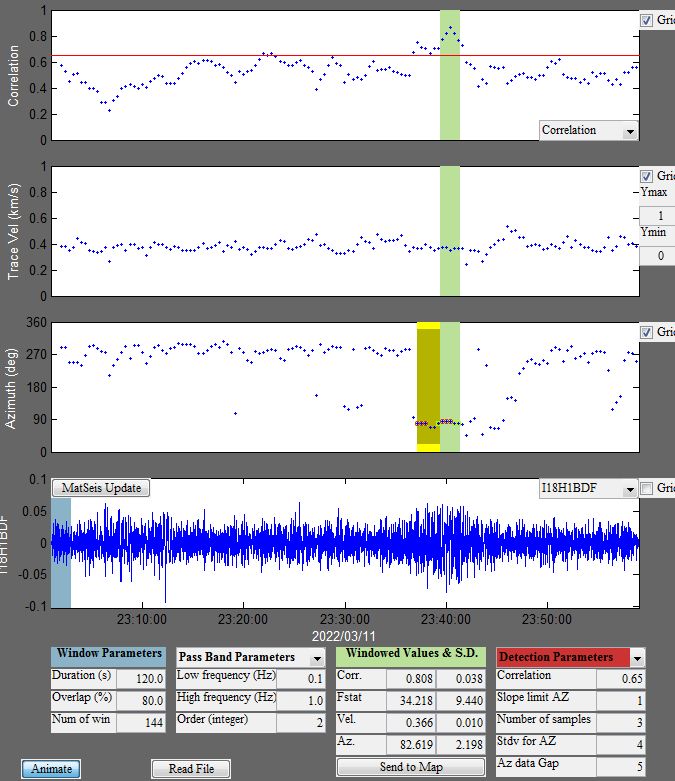
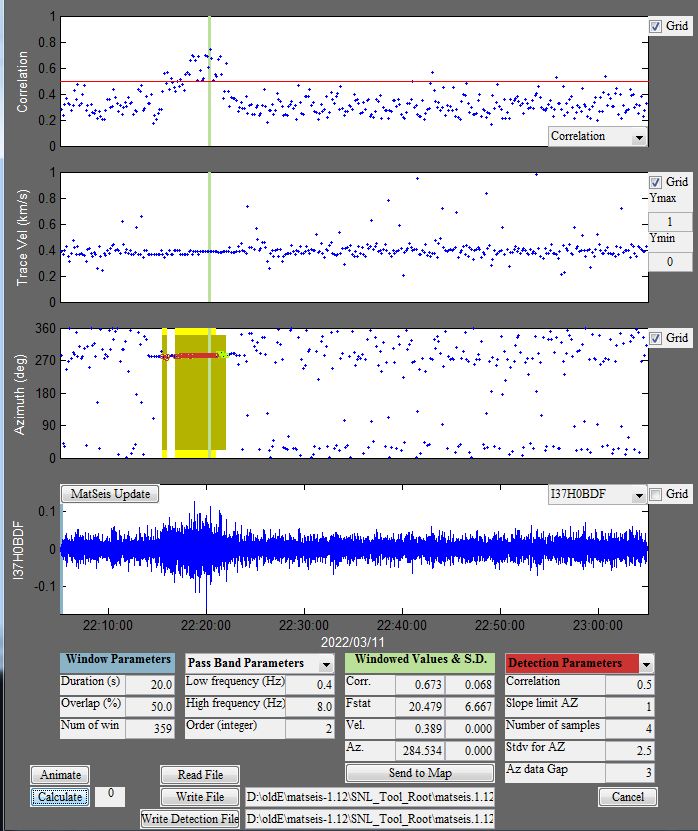
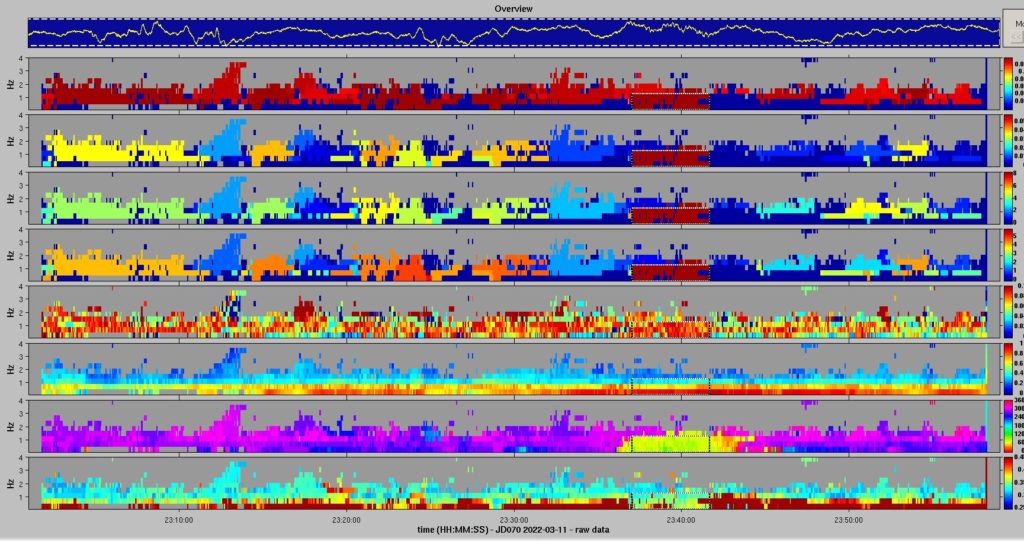
Sources
- MPEC 2022-E178
- Minor Planet Mailing List
- Peter Brown (pers. comm.)



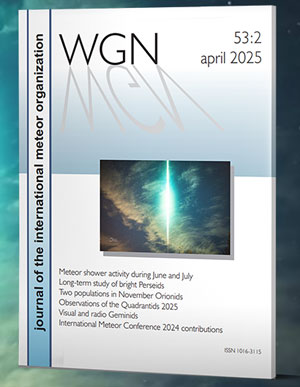
 You saw something bright and fast? Like a huge shooting star? Report it: it may be a fireball.
You saw something bright and fast? Like a huge shooting star? Report it: it may be a fireball.  You counted meteors last night? Share your results with us!
You counted meteors last night? Share your results with us!  You took a photo of a meteor or fireball? You have a screenshot of your cam? Share it with us!
You took a photo of a meteor or fireball? You have a screenshot of your cam? Share it with us!  You caught a meteor or fireball on video? Share your video with us!
You caught a meteor or fireball on video? Share your video with us!
3 comments
I saw it! I’m in Pittsfield MA 01201
I was driving coming home from getting some milk it was night time ( not sure how late) was close to my house by about 2 mins bright light blew up in the sky that’s what caused me to look. I looked to my right and then I saw what looked like a falling star? Fall down. Then I just saw this news article to report it
Pittsfield is magical in her quiet moments. Thanks for sharing this Heaven.
What a sight!
It must be recalled that in a similar occurrence:
1) We must examine seismic graphics, in the case of Lugo, Italy (19 January 1993), 20 ktn, the array of seismographs recorded the bolide as microbarograph!
2) If the fall occurs on a land, one must place adhesive tape from parcels with the glue upward to collect microdust falling in the weeks following the event (yes, the dust needs a week to reach the surface). If during the week it begins to rain, it must be removed.
Best greetings.
Roberto Gorelli